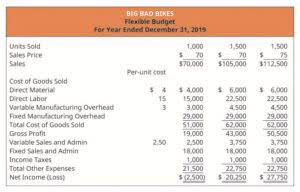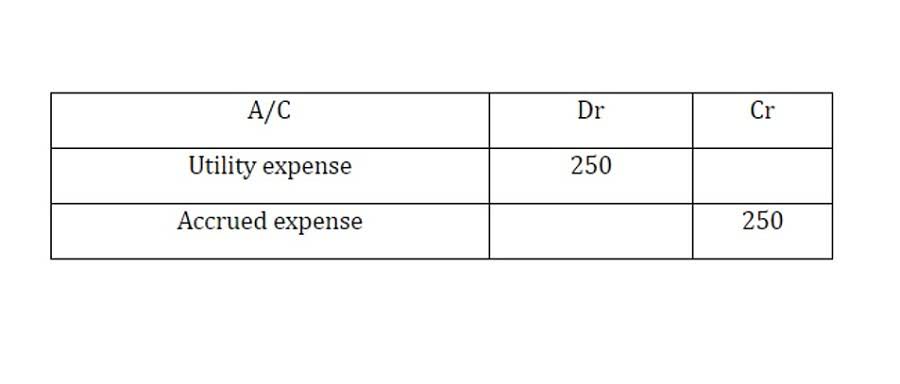
Depreciation can be both a product cost and a period cost, depending on the use of the assets being depreciated. Depreciation of factory equipment is typically considered a manufacturing overhead and, thus, a product cost. Conversely, depreciation of office equipment or buildings used in administration or sales functions is treated as a period cost.
- These costs include selling and marketing expenses, administrative expenses, and research and development costs.
- The distinction between period costs vs product costs is crucial for accurate financial reporting.
- Period costs are also known as period expenses, time costs, capacity costs, and operating expenses.
- By recognizing the impact of period costs on profit, companies can make informed decisions about investing in innovation.
- Any of these types of companies may just use the term overhead rather than specifying it as manufacturing overhead, service overhead, or construction overhead.
Create a free account to unlock this Template

It is essential for companies to accurately categorize and document these expenses to ensure they are maximizing their tax deductions. For instance, a business may be able to deduct the full amount of certain administrative expenses, such as office supplies or non-depreciable equipment, in the year they are purchased. As shown in the income statement above, salaries and benefits, rent and overhead, depreciation and amortization, and interest are all period costs that are expensed in the period incurred. On the other hand, costs of goods sold related to product costs are expensed on the income statement when the inventory is sold. By carefully examining these period costs, businesses can assess how efficiently they are utilizing their resources and identify areas where costs can be reduced or eliminated.
Operating Expenses and Net Income
- As you can see there is a heavy focus on financial modeling, finance, Excel, business valuation, budgeting/forecasting, PowerPoint presentations, accounting and business strategy.
- Properly classifying costs is key for accurate financial statements, and understanding the different roles of Period and Product Costs is crucial for financial reporting.
- Tracking period costs will also help a business balance its budget and gain savings.
- Understanding period costs is important for wise decision-making and financial management as a business owner.
- This precise allocation allows stakeholders to interpret the company’s past performance and predict its future profitability.
- A product cost is incurred during the manufacture of a product, while a period cost is usually incurred over a period of time, irrespective of any manufacturing activity.
The $10 direct materials would be a debit to cost of goods sold (increasing) and a credit to inventory (decreasing). In general, overhead refers to all costs of making the product or providing the service trial balance except those classified as direct materials or direct labor. Manufacturing overhead costs are manufacturing costs that must be incurred but that cannot or will not be traced directly to specific units produced.

Module 1: Nature of Managerial Accounting
- The fixed cost per unit of output will vary inversely with changes in output level.
- The cost of raw materials, such as wood or metal, is a classic example of a variable cost.
- Analyzing historical data and trends can help businesses anticipate fluctuations in mixed costs and make informed decisions to control expenses.
- In managerial and cost accounting, period costs refer to costs that are not tied to or related to the production of inventory.
- Resource Allocation is a crucial aspect of cost accounting that allows businesses to assign expenses to specific cost objects, such as products, services, or departments.
As you can see there is a heavy focus on financial Bookstime modeling, finance, Excel, business valuation, budgeting/forecasting, PowerPoint presentations, accounting and business strategy. Dynamic platform dedicated to empowering individuals with the knowledge and tools needed to make informed investment decisions and build wealth over time. If operations are halted, the firm will not incur enabling costs; nevertheless, if operations are resumed, the firm will incur them. Some will most likely be consistent across the whole output range, while others will likely fluctuate in steps.

Period costs help the management understand the burden of cost that a firm is facing irrespective of whether the company is working or not, earning any profit or not. Moreover, it helps authorities identify the irrelevant unavoidable costs that will always consider reaching the breakeven point. By leveraging Period Cost data in decision-making processes, businesses can enhance operational efficiency, mitigate risks, and achieve sustainable growth and profitability in the long term. Product Costs are essential for calculating the cost of goods sold and determining the gross profit margin of a business. While the basic service charge remains fixed, the overall utility bill can increase or decrease based on consumption.

These costs are not directly tied to the production of goods or services, but rather to the overall operation of the company. Examples of period costs may include rent, salaries and wages of administrative staff, office supplies, marketing and advertising expenses, and other similar expenses. While these costs are necessary for the overall functioning of the business, they do not directly contribute to the production of goods or period costs include services.


